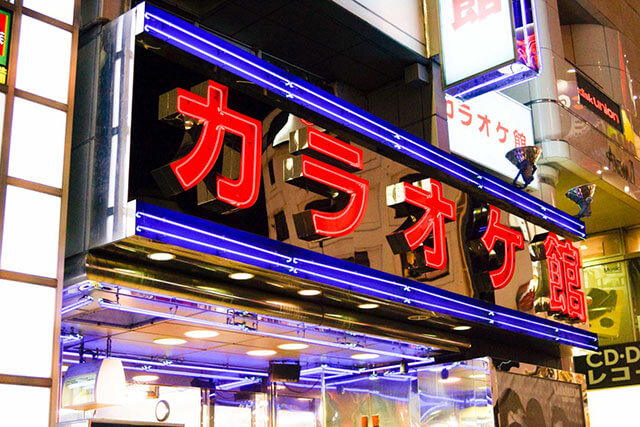
How can you visit Japan without experiencing the national pastime that doubles as one of its best known exports? Japan is the home of Karaoke and, not surprisingly, offers a variety of options for you to exercise your pipes.
-
There are over 120,000 spots across Japan to sing, which means that even in the smallest town, chances are pretty good you will find a place to unleash your inner pop star. Bigger venues in bigger towns and cities will no doubt have a larger selection of non-Japanese songs that will be a bit more up to date. These bigger venues are also starting to feature more popular songs from China and Korea. Charges will vary between venues, but usually you will be charged by the half-hour per person. All-you-can-sing packages as well as discounted fees depending on the time of day and the day of the week. It’s best to check for these options before you start singing up a storm!
![]()
-
02
Box vs Bar
Karaoke began in Japan in the ‘bar’ form. If you are looking to try your skills in front of a Japanese audience, this is the option for you. It is a very authentic experience and that has a more intimate, nostalgic charm. English song selections in traditional karaoke bars may be a bit sparse, but the Beatles, Sinatra and Elvis are usually a given.
In smaller Japanese towns patrons will probably be surprised to see you in their local, but will support your efforts no matter how poor they may be. Sadly for old-school enthusiasts, these karaoke bars are slowly disappearing, being replaced by the more popular chain-store karaoke boxes, such as
Big Echo and Cote D’Azur.![]()
While there is nothing stopping you from renting a karaoke box on your own, they are more regularly frequented by couples, families and groups of friends. Japanese people often visit karaoke following a dinner, or event when they are usually fortified by a little ‘Dutch courage’, so expect to see locals who have had a couple of drinks.
If you want to sing with your kids, but are keen to avoid the party crowd, you can also visit karaoke boxes during the day. They are generally open from around 11am and stay open until the wee small hours, somewhere between 3-5am. -
【With song selected and microphone in hand, all you need to do is belt out your favorite tune…】
-
04
Work That Mic
Technology has come a long way since the first Karaoke machines appeared in the mid-70s. Today’s machines have simplified the process with touch screens, often with bilingual menus, that allow for searching and selection from the song database.
You can also change the key of the song and insert vocal effects if you feel your natural sound isn’t up to scratch. With song selected and microphone in hand, all you need to do is belt out your favorite tune and entertain your group, who can often accompany by way of the maracas, tambourines and bells often found in the box. Wall phones mean that if you have any trouble, the generally helpful staff are just a call away.
-
05
Eat, Drink and Be Merry
A variety of snack food is also just a phone call away. It’s usually run-of-the-mill fare but remember you’re supposed to be here to sing. Bigger chains have more elaborate menus so you can order pasta dishes and choose from a variety of desserts to sweeten the mood. Drinks are of course available; beer, wine, basic spirits and soft drinks for the most part but many places will do cocktails and mocktails so do investigate the menu.
![]()
-
06
More Than This
Perhaps the most asked karaoke question we’re hit with is about the location of the ‘box’ Bill Murray and Scarlett Johansson made famous in the film “Lost in Translation”, singing Roxy Music and Pretenders tracks. It’s called
Karaokekan and can be found in Shibuya (Bill and Scarlett were in rooms 601 & 602!) but be warned – a lot of other visitors to Tokyo have seen the film and have had the same idea so get in quick!- カラオケ館 渋谷店
-
-
- 東京都渋谷区宇田川町30-8 K&Fビル
-
-
-
- 0334620785
-
View All









